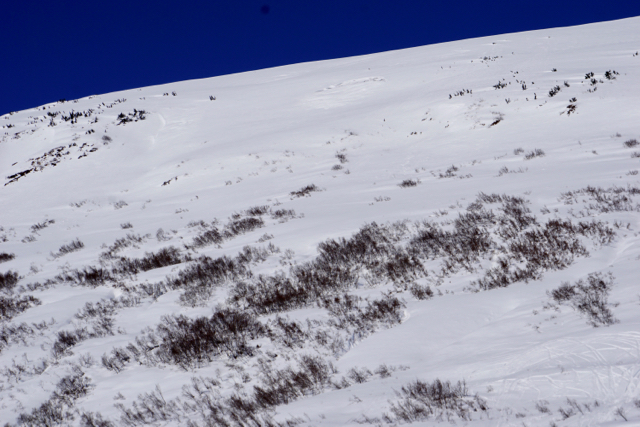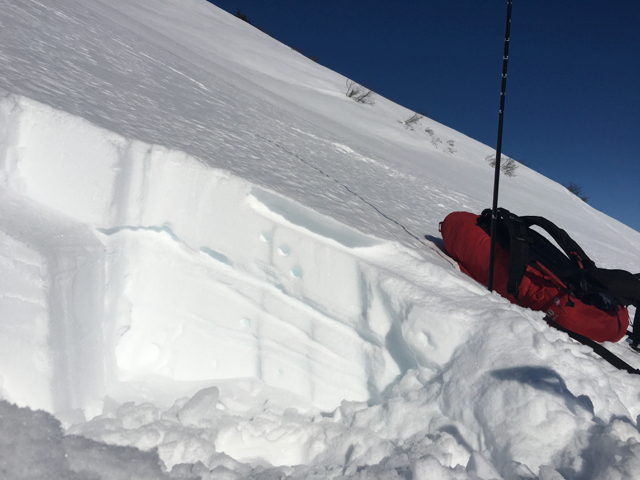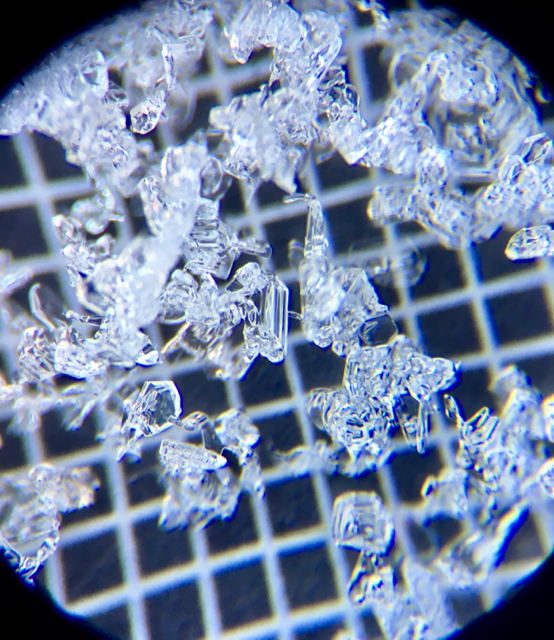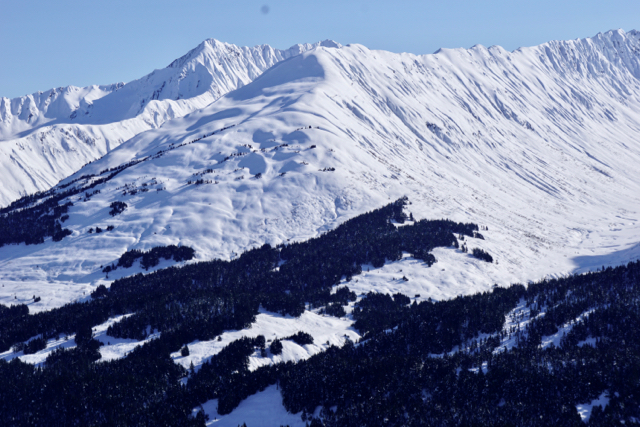None.
Observation: Turnagain
Location: Seattle Ridge
Traveled along the base of Seattle Ridge and then midway up the up-track with a reporter/writer who is writing a book about snow! We viewed the slowly opening glide crack to the looker’s left of the up-track and took a look at the near surface facets that are forming due to the persistent cold and clear weather.
Beautiful sunny skies. Calm winds. Temperatures around 12F at parking lot and 20F at 2,000'.
A mix of sun crust and soft near surface facets. It seems the SE face of Seattle Ridge sports a thin sun crust in places. We staying in sheltered zones that had been only slightly wind affected from last week's wind event.
We dug a quick pit to look at the near surface facets and sun crust. The sun crust, on the surface, was very thin (2-5mm) and easily breakable, a zipper crust some may call it. The near surface facets were advanced, 1-2mm and striated.
Pit: 2,000', SE aspect, HS 200cm, CT 11 and ECTN 14 down 30cm on facets under a harder faceted layer.
Glide cracks: The glide crack on Seattle Ridge that is just to the looker's left of the up-track (photo below) is slowly growing along with others in less traveled areas North of the up-track. There are other glide crack on the Southerly aspects of Eddies ridge.

Glide crack on Seattle Ridge - looker's left of the up-track

Shallow snow pit at 2,000'. Advanced near surface facets below a thin sun crust found in top 10cm. Harder snow sits above a weaker faceted later 30cm down (where the CT and ECT test results failed).

Advanced near surface facets - 1-1.5mm and striated (1mm grid). These sit just below the surface sun crust.

Eddies Ridge

Tincan Ridge

Sunburst, Magnum and Cornbiscuit